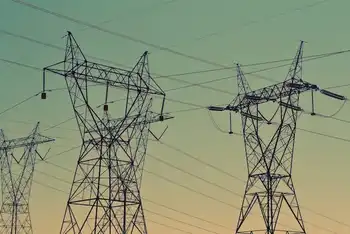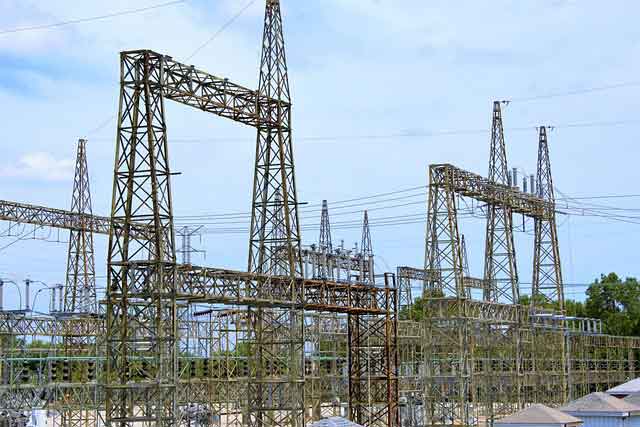China races ahead of U.S. to invest in green energy
China's need to sustain strong economic growth means its reliance on fossil fuels will continue to grow, as will its position as the world's biggest emitter of carbon, analysts say. But it is also investing heavily in windmills, solar panels and hydroelectric power, having doubled its wind generating capacity every year since 2005.
China is already the world's leading manufacturer of solar panels, Dinghuan Shi, chairman of the government's China Renewable Energy Society, said at an energy conference in Beijing earlier this month.
Julian Wong, senior policy analyst at the Center for American Progress, said solar power looks especially promising.
"It hasnÂ’t even been a full year since the [Chinese] government made domestic solar deployment a priority. We have seen how government support of wind helped it take off. It could be the same for solar," Mr. Wong said.
China's rapid industrial development in the past three decades has been fueled by coal, which supplies 76 percent of China's electric-generating needs.
"For China to keep its rapid economic growth going, the only economic option is to burn more coal; renewable energy simply cannot compete," said Tristan Edmondson, founding partner at Mint Research, a Beijing-based consultancy.
Mr. Edmondson estimates that China will use 2.17 trillion tons of coal a year by 2020, up from 650 billion tons in 2000.
By then, Chinese planners are counting on non-fossil fuels to provide 15 percent to 17 percent of its electricity, up from about 8 percent today.
China's new energy development plan, drafted by the National Energy Administration, is expected to be announced shortly after the UN climate change conference in Copenhagen concludes.
Published reports suggest that the plan will raise the country's 2020 targets, last set in 2005, to aim for a fivefold increase in wind power and a tenfold increase in the solar power feeding its electricity grid.
In 2008, China was second only to the United States in terms of investment in renewable energy — $176 billion versus $200 billion — according to the global research unit of HSBC, the international banking group.
HSBC estimates that the country has devoted $221 billion of its recent economic stimulus money to green projects, more than twice as much as the United States and equivalent to 5 percent of China's 2008 gross domestic product.
Solar power contributes 140 megawatts, less than 0.1 percent of the total, to China's electricity grids. The new target is expected to rise to 2 gigawatts by 2011 and 20 gigawatts by 2020.
"China's solar industry has previously been geared towards foreign markets but we are now seeing domestic growth," said Mr. Wong, of the Center for American Progress.
Regulations requiring large power companies to have a fixed percentage of their total energy capacity coming from renewable sources have sent energy suppliers scrambling to meet targets. In some cases, investments have pushed ahead of infrastructure.
For example, many of China's windmills have not been connected to its electricity grids.
"It is easy to be very critical — building a wind farm and not even connecting it — but the obstacles are huge," Mr. Edmondson said. "It is not just about building power lines but about overhauling the entire system."
In many cases, the burden falls on state-owned grid companies to make the connections.
"The government can just issue an edict to get the changes made, but they need to be careful about disadvantaging the companies involved; otherwise, the energy companies will do the minimum possible," said Kent Carter, managing director of China Ventures at Camco International, a leading climate change and sustainable development company.
China already gets more than 170 gigawatts, or nearly one-fourth, of its electricity from hydroelectric sources. Yet difficulties surrounding the massive Three Gorges dam project have tarnished hydropower's reputation, at least for now.
"There was a backlash regarding environmental concerns, but if there is eventually a cap on carbon [hydroelectric power] could be the biggest beneficiary, along with nuclear," said Sheeraz Haji, managing partner at the Cleantech Group, a major investor in renewable energy.
"It's hard to ignore that solar, and also wind, is where the main focus is today," he said.
Related News

Clean B.C. is quietly using coal and gas power from out of province
VANCOUVER - British Columbians naturally assume they’re using clean power when they fire up holiday lights, juice up a cell phone or plug in a shiny new electric car.
That’s the message conveyed in advertisements for the CleanBC initiative launched by the NDP government, which has spent $3.17 million on a CleanBC “information campaign,” including almost $570,000 for focus group testing and telephone town halls, according to the B.C. finance ministry.
“We’ll reduce air pollution by shifting to clean B.C. energy,” say the CleanBC ads, which feature scenic photos of hydro reservoirs. “CleanBC: Our Nature. Our Power. Our Future.”
Yet…





